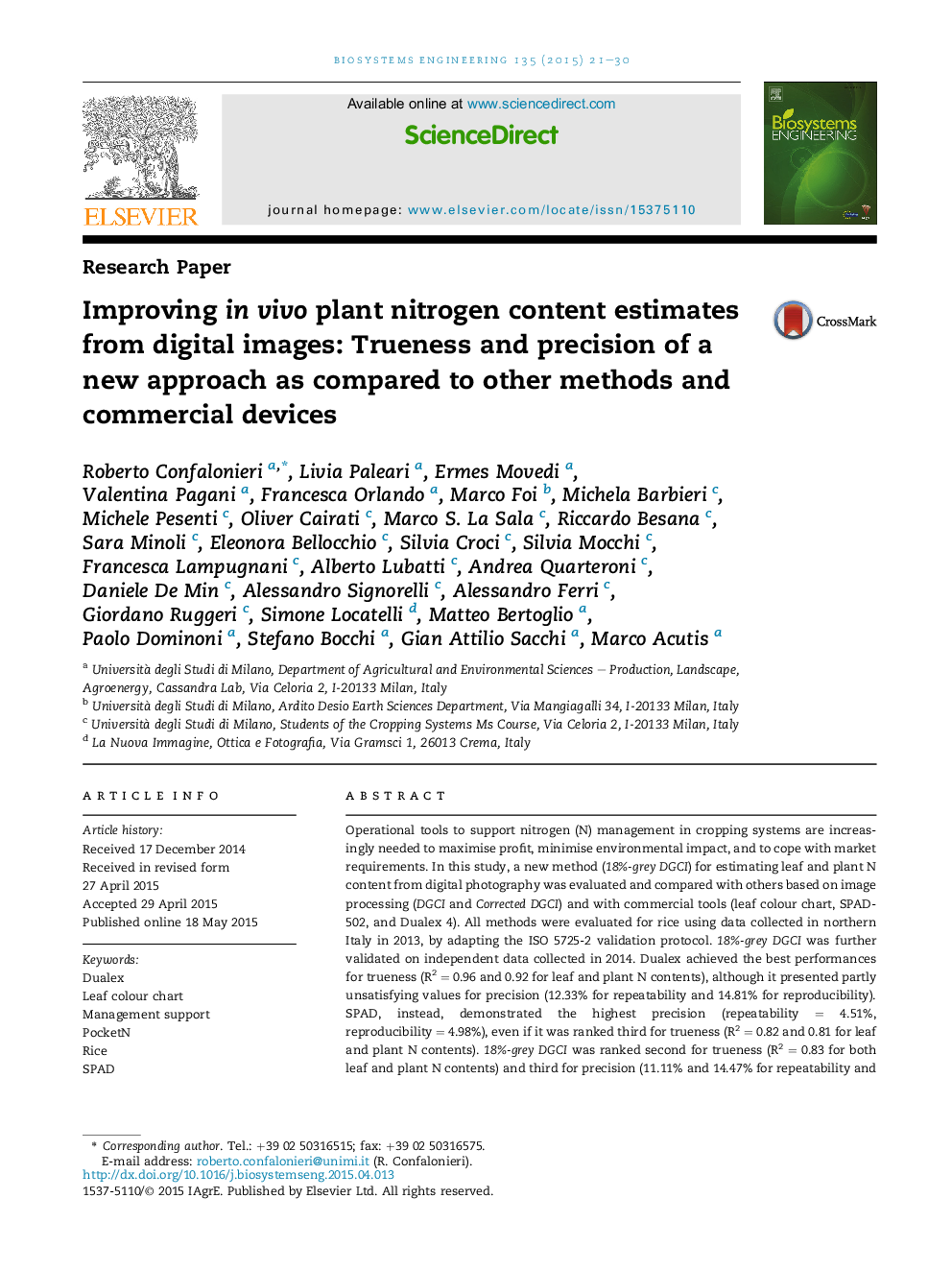| کد مقاله | کد نشریه | سال انتشار | مقاله انگلیسی | نسخه تمام متن |
|---|---|---|---|---|
| 1710988 | 1519526 | 2015 | 10 صفحه PDF | دانلود رایگان |

• A new method for plant N content estimates based on image processing is presented.
• It was tested for rice and compared with other methods and commercial devices.
• Dualex was the method with the best trueness, SPAD the one with the best precision.
• The method proposed here is very cheap and presented a satisfying reliability.
Operational tools to support nitrogen (N) management in cropping systems are increasingly needed to maximise profit, minimise environmental impact, and to cope with market requirements. In this study, a new method (18%-grey DGCI) for estimating leaf and plant N content from digital photography was evaluated and compared with others based on image processing (DGCI and Corrected DGCI) and with commercial tools (leaf colour chart, SPAD-502, and Dualex 4). All methods were evaluated for rice using data collected in northern Italy in 2013, by adapting the ISO 5725-2 validation protocol. 18%-grey DGCI was further validated on independent data collected in 2014. Dualex achieved the best performances for trueness (R2 = 0.96 and 0.92 for leaf and plant N contents), although it presented partly unsatisfying values for precision (12.33% for repeatability and 14.81% for reproducibility). SPAD, instead, demonstrated the highest precision (repeatability = 4.51%, reproducibility = 4.98%), even if it was ranked third for trueness (R2 = 0.82 and 0.81 for leaf and plant N contents). 18%-grey DGCI was ranked second for trueness (R2 = 0.83 for both leaf and plant N contents) and third for precision (11.11% and 14.47% for repeatability and reproducibility). The good performances of the new method were confirmed during the 2014 experiment (R2 = 0.87 for leaf N content). The 18%-grey DGCI method has been implemented in a smartphone app (PocketN) to provide farmers and technicians with a low-cost diagnostic tool for supporting N management at field level in contexts characterised by low availability of resources.
Journal: Biosystems Engineering - Volume 135, July 2015, Pages 21–30